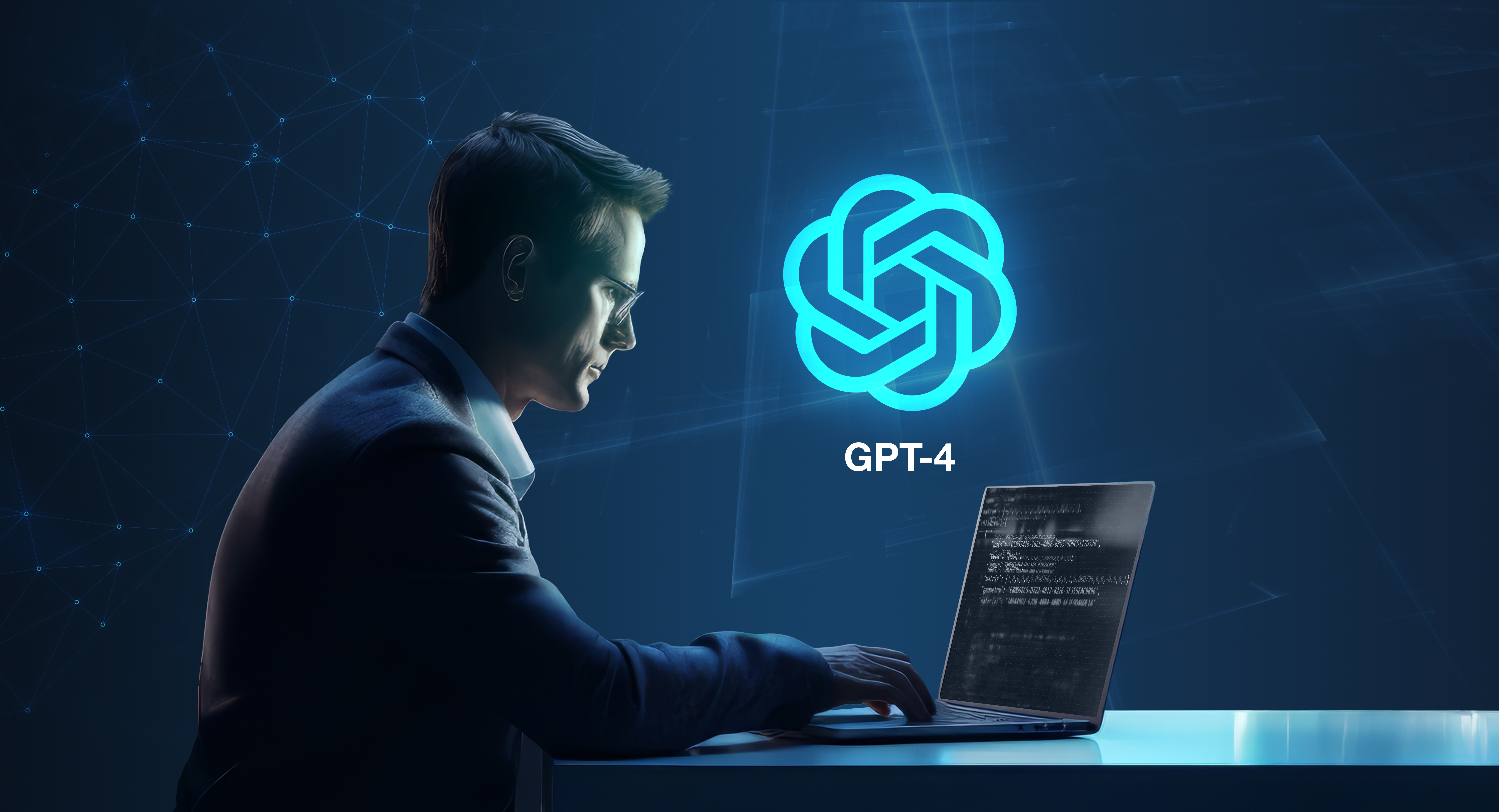Key Highlights
- GPT-4, the latest from OpenAI, brings groundbreaking capabilities that are a game-changer for developers.
- From code generation and debugging to UI/UX enhancement, GPT-4 empowers developers to streamline workflows and enhance productivity.
- Multimodal in nature, GPT-4 processes both text and images, unlocking new possibilities for innovative applications across various domains.
- Developers can leverage GPT-4 to build next-gen applications, including AI-powered tools and dynamic content platforms.
- While GPT-4 offers immense opportunities, ethical considerations and responsible AI development are crucial for its successful implementation.
Introduction
GPT models have changed how we use natural language processing (NLP). Built using advanced deep learning algorithms and trained on massive datasets, these models generate human-like text, translate languages, craft creative content, and answer complex questions. GPT-4, the latest iteration, stands out with its integrated multimodal capabilities, enabling developers to enhance accuracy and responsiveness in human-computer interactions.
Advanced Coding Assistance with GPT-4
Gone are the days when developers relied solely on their skills to solve tough coding problems. GPT-4 offers intelligent coding support that boosts productivity and simplifies complex tasks. Imagine a world where developers can quickly generate code snippets, debug tricky issues, and optimize code performance—all with the help of this AI-powered assistant.
GPT-4 allows developers to focus on more critical tasks by automating repetitive coding chores and providing smart suggestions. It’s like having a skilled partner ready to tackle coding challenges.
Generating Code Snippets for Various Programming Languages
One of GPT-4’s most impressive features is its proficiency in understanding and generating code across multiple programming languages. Trained on vast amounts of code from diverse sources, this AI powerhouse can produce clear and efficient code snippets based on a natural language description.
Whether it’s Python, Java, C++, or JavaScript, GPT-4’s understanding of syntax, libraries, and best practices accelerates the development process. It allows developers to rapidly prototype ideas, integrate features, and experiment with new approaches without getting bogged down in coding minutiae.
Debugging Complex Code with AI Insights
Debugging, often a tedious part of software development, becomes more efficient and insightful with GPT-4. Instead of traditional peer reviews, it analyzes large codebases to detect patterns, automate code reviews, and streamline the debugging process.
By providing AI-driven insights into problematic code, GPT-4 helps developers quickly identify bugs, suggest optimizations, and offer solutions, reducing the time spent on debugging and accelerating project timelines.
Optimizing Code for Performance and Efficiency
In today’s data-driven world, code optimization is crucial. GPT-4, designed by OpenAI’s leading scientists, excels at understanding algorithms, data structures, and performance improvements. It’s a valuable asset for developers looking to refine and optimize their code, especially in NLP applications.
Whether analyzing small snippets or entire codebases, it identifies bottlenecks, suggests better algorithms, and recommends faster libraries, enabling developers to create high-performance software that delivers superior user experiences.
Check out How Artificial Intelligence is Reshaping Real Estate Investment Strategies.
Creative Applications of GPT-4 in Development
GPT-4 is not just a tool for coding; it’s a gateway to creative possibilities. It’s transforming how developers approach UI/UX design, content creation, and even game development, offering new avenues to explore and innovate.
Designing Innovative User Interfaces with AI Assistance
UI/UX design is rapidly evolving, and GPT-4 is at the forefront of this change. In the past, crafting intuitive and visually appealing interfaces depended largely on human designers. Now, GPT-4, with its ability to process both text and images, brings a fresh perspective to design.
By analyzing design briefs, user personas, and even rough sketches, it can generate UI mockups, suggest design elements, and enhance existing interfaces. This AI-driven approach supports both seasoned designers seeking inspiration and newcomers aiming to bring their ideas to life.
Generating Dynamic Content for Web and Mobile Applications
In today’s digital age, static content is no longer sufficient. Users demand engaging, personalized experiences across web and mobile platforms. GPT-4 empowers developers to create dynamic content that adapts to user preferences and behaviors.
With its human-like text generation capabilities, GPT-4 can analyze user data to craft personalized recommendations, tailored messaging, and custom content feeds. Whether it’s an e-commerce site suggesting products or an educational app tailoring lessons, it enhances user engagement by delivering the right content at the right time.
Applying GPT-4 in Game Development for Storytelling
Storytelling is central to captivating video games, and GPT-4 revolutionizes how developers create rich narratives and believable characters. Imagine games where non-player characters (NPCs) interact dynamically with players, with dialogue that evolves based on player choices.
With GPT-4, game developers can quickly generate dialogue, adapt storylines, and create immersive worlds where every choice influences the outcome. This fusion of GPT-4’s capabilities and developer creativity heralds a new era of interactive storytelling in gaming.
Here’s an article on Augmented Reality in E-commerce: The Future of Shopping, check it out.
Building Enhanced Productivity Tools
GPT-4’s potential extends far beyond coding and creative tasks. It’s a powerful tool for building enhanced productivity solutions that simplify workflows for individuals and teams alike.
Developing Custom IDE Plugins Powered by GPT-4
Integrated Development Environments (IDEs) are essential tools for developers. By integrating GPT-4, developers can create custom plugins that supercharge productivity. Imagine an IDE plugin that not only auto-completes your code but also suggests improvements based on best practices.
These plugins can be tailored to specific languages, frameworks, or personal coding styles, offering a more personalized and efficient development experience. GPT-4 in IDEs represents a significant step towards AI-assisted software development.
Creating Automated Testing Systems for Software Quality Assurance
Automated testing is crucial for maintaining software quality in today’s fast-paced development environment. However, building and maintaining comprehensive test suites can be labor-intensive. GPT-4, with its vast knowledge base, can revolutionize automated testing by generating test cases, executing tests, and identifying vulnerabilities in the code.
By automating these routine tasks, it enables QA teams to focus on more specialized testing, improving both speed and accuracy while enhancing the overall quality of software products.
Implementing AI-Powered Code Review Tools
Code review is a critical aspect of software development, ensuring code quality and adherence to standards. GPT-4-powered AI code review tools are transforming this process by automating many aspects of code inspection.
These intelligent tools can identify bugs, security flaws, and style inconsistencies, all while understanding the context and intent behind the code. By streamlining code reviews, these tools allow developers to focus on more complex issues, leading to higher-quality software production.
Pioneering New Fields with GPT-4
The influence of GPT-4 extends beyond software development, impacting sectors like biotech, medicine, finance, and research. Its versatility paves the way for new innovations and expands the possibilities in various fields.
Exploring GPT-4’s Role in Biotech and Medicine
The intersection of AI and healthcare holds transformative potential, and GPT-4 plays a key role in this evolution. By processing complex medical texts, patient records, and research papers, it accelerates drug discovery, personalized treatment plans, and aids in diagnostics.
In drug discovery, GPT-4 analyzes vast scientific datasets to identify potential drug targets, predict efficacy, and even suggest novel compounds. Its ability to understand complex biological systems and detect patterns could reduce the time and cost associated with traditional drug development.
Check out an article on AI Chatbots and Virtual Assistants in Healthcare.
Innovating Financial Modeling and Forecasting with AI
Financial modeling and forecasting are intricate tasks that require deep expertise and the ability to analyze vast amounts of data. GPT-4 brings the power of AI to finance, enabling more accurate and insightful models.
By processing historical financial data, market trends, and economic indicators, it can detect subtle patterns that traditional models might overlook. This enhances decision-making, improves risk assessments, and enables the automation of many aspects of financial forecasting.
Driving Research and Development with AI-Assisted Insights
Research and development (R&D) are at the heart of innovation, driving advancements in technology, medicine, and more. However, the journey of discovery is often slow and resource-intensive. GPT-4 is poised to accelerate R&D by providing AI-assisted insights that propel scientific breakthroughs.
By analyzing vast datasets, generating hypotheses, and assisting in coding, it becomes an invaluable tool for researchers. Whether it’s drug development, materials science, or patent research, GPT-4’s capabilities can significantly shorten the path to innovation.
Enhancing User Experience with GPT-4
At its core, technology aims to improve our lives, and GPT-4 exemplifies this by helping developers craft user experiences that are intuitive, personalized, and engaging.
Personalizing User Interfaces with AI
In today’s digital landscape, one-size-fits-all approaches to user interfaces no longer suffice. Users demand personalized experiences that cater to their unique needs, preferences, and goals. AI-driven personalization, powered by models like GPT-4, is revolutionizing how we design and interact with digital interfaces.
Imagine a website that dynamically adjusts its layout, content, and even language based on a user’s behavior, purchase history, and preferences. Or consider an educational app that tailors lessons to a student’s learning pace, strengths, and weaknesses.
Automating User Support with Intelligent Chatbots
Gone are the days of waiting endlessly for customer support. With GPT-4-powered intelligent chatbots, customer service is faster, more personalized, and available 24/7. These chatbots understand natural language, provide relevant information, and even solve complex issues with human-like empathy.
These AI-driven systems significantly enhance user satisfaction by addressing inquiries and resolving issues promptly. From e-commerce to healthcare, intelligent chatbots are transforming customer support, making it more accessible and efficient.
Integrating Multimodal Capabilities for Richer Interactions
GPT-4’s multimodal capabilities enable richer and more engaging user interactions by processing text and images simultaneously. This opens up new possibilities for applications that require a more holistic understanding of user input.
For example, in an e-commerce platform, it can analyze both a customer’s text queries and their browsing history to provide personalized product recommendations. Or in a healthcare app, it can interpret both patient symptoms and medical images to suggest potential diagnoses and treatment options.
Creating Adaptive Learning Systems for Educational Platforms
Education is changing. It is moving away from the old way of teaching that fits everyone in the same mold. Now, it focuses on learning paths that fit each student’s unique needs and styles. Adaptive learning systems, using AI models like GPT-4, are crucial in this shift. They create flexible learning experiences that change as each student learns. These systems look at each student’s progress, strengths, and weaknesses.
Imagine a learning platform that changes the speed and difficulty of lessons based on how a student performs. If a student struggles, the platform provides extra help. If they do great, it offers tougher materials. it helps make assessments that adjust their difficulty depending on how students answer questions. This offers advice tailored to each student and spots where they might need more help.
These AI-driven learning systems can study large amounts of student data, such as test scores and learning habits. They can even track how engaged students are. This information gives teachers insights that help them improve their lessons and personalize learning. The future of education is about being flexible, individual, and data-based. With GPT-4, we are building better and more engaging places for students to learn.
Here’s an article on AI Tech Stack Essentials for Seamless Integration.
Implementing GPT-4 in Cloud Computing
The use of GPT-4 in cloud computing is a big step forward for smart technology. Cloud service providers can use GPT-4’s strengths to give better services. These services can help people be more productive, automate tricky tasks, and create new options for businesses and developers.
Think about cloud platforms that let developers easily add GPT-4’s natural language processing, code making, and data analysis into their apps. It can run serverless functions that quickly translate languages, create content, or analyze data as needed. By adding GPT-4 with cloud systems, such as Google Cloud, we can create exciting and cost-effective solutions for many different industries.
Ethical Considerations in GPT-4 Development
While GPT-4 offers immense opportunities, developers must also consider the ethical implications of its use. Responsible AI development involves addressing issues such as bias, privacy, and the potential for misuse.
Developers must ensure that it is used to build systems that are fair, transparent, and respect user privacy. By adopting ethical practices, developers can create AI applications that benefit society while minimizing potential harm.
Conclusion
In conclusion, GPT-4 gives developers many options. It can help with coding and spark creativity in development. With this AI technology, developers can make code faster, work better, and open new areas. They can also enhance user experience. There are many chances to innovate in fields like biotech, finance, and education with GPT-4.
Using these abilities can change the way we develop. If you want to discover the opportunities that GPT-4 offers, reach out to start a journey of great innovation and efficiency in your projects.



